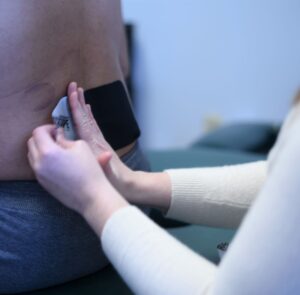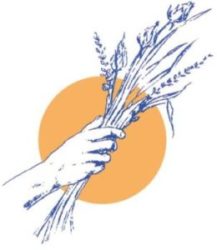Low Back Pain
 If you are suffering from low back pain, you are not alone. More than 80% of Americans will experience low back pain at some point in their lives. Low back pain and disability costs Americans more than $50 billion annually in terms of lost work production and medical expenses.
If you are suffering from low back pain, you are not alone. More than 80% of Americans will experience low back pain at some point in their lives. Low back pain and disability costs Americans more than $50 billion annually in terms of lost work production and medical expenses.
The low back is susceptible to injury for several reasons. The anatomy of the low back, much like the neck, creates instability. Unlike the thoracic spine, which is limited in its movement because of its attachment to the ribs, the lumbar spine is much more freely moving, allowing us to bend down and touch our toes, or to twist into a yoga pose, but at the cost of increased potential for injury. Also, the lumbar vertebrae act as attachment points for many powerful, large muscles, and these muscles can pull asymmetrically and thus create misalignments in the spine.
But as long as the low back is healthy, strong, and aligned correctly, it can withstand tremendous force without injury. However, if the low back is out of adjustment or if the supporting muscles are weakened, then something as simple as bending forward to pick up a bag of groceries from the trunk, or turning suddenly, can cause a low back injury.
 Until recently, researchers believed that low back pain would heal on its own. More recent studies have shown that if low back pain is not treated, it may go away temporarily, but will most likely return, often more severely. It is important to take low back pain seriously and to seek professional chiropractic care. As chiropractors, we are unique in the health care field in that much of the training in chiropractic colleges is specifically aimed at identifying and treating low back conditions.
Until recently, researchers believed that low back pain would heal on its own. More recent studies have shown that if low back pain is not treated, it may go away temporarily, but will most likely return, often more severely. It is important to take low back pain seriously and to seek professional chiropractic care. As chiropractors, we are unique in the health care field in that much of the training in chiropractic colleges is specifically aimed at identifying and treating low back conditions.
There are many different conditions that can result in low back pain, including incomplete rehabilitation of past injuries, acute ligament sprains or muscle strains, ruptured or bulging discs, scoliosis, knee and hip misalignments and pain, fallen arches in the feet, trigger points, and inflamed joints. Common events or situations leading to or contributing to low back pain are improper lifting, automobile accidents, poor workstation set up, poor posture, prolonged sitting, physical inactivity, obesity, and even psychological stress. Low back pain can also be referred from organs, including kidneys and large intestines.
Once we have determined that your low back pain is of a musculoskeletal nature, treatment will include chiropractic adjustments. We use many techniques, including applying a gentle manual force, using an activator adjusting instrument, or “blocking”, placing wedges under your hips in a specific pattern to realign your spine and pelvis. In certain situations we use a special “flexion-distraction” table to mobilize and traction the lumbar spine. Spinal adjustments have been shown to decrease pain, increase spinal mobility, decrease muscle spasm, decrease inflammation, and decrease the chance of recurrence of chronic injuries.
We also employ other manual and physiotherapies, including massage, trigger point therapy, ultrasound, muscle stimulation, and kinesiotaping in order to assist the muscles to relax and to increase mobility.
We also include in our treatment plan instruction in postural habits, especially proper sitting postures. Many activities of daily living can also play a major role in the development or lack of development of low back pain. For instance, we can advise patients on proper lifting techniques, avoidance of dangerous repetitive motions, avoidance of prolonged sitting, and proper sleeping positions.
